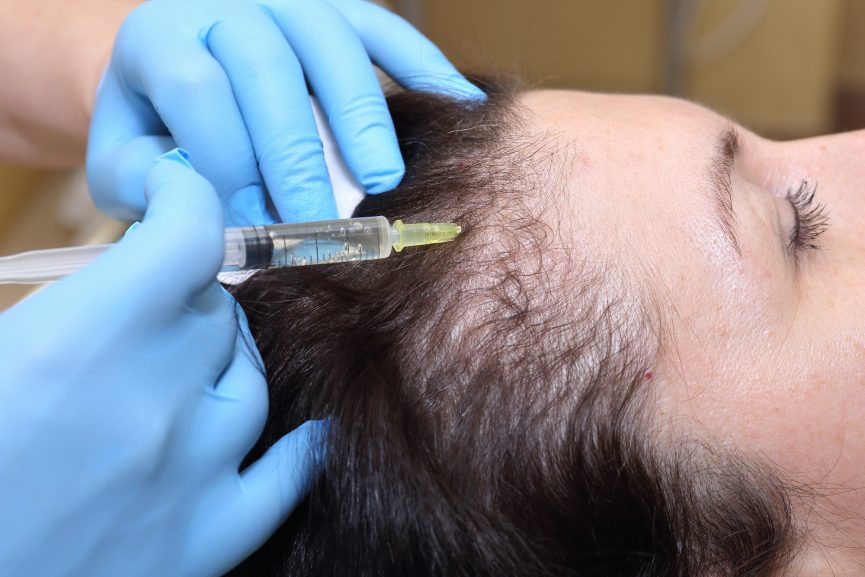When Tiger Woods admitted to getting platelet-rich plasma, or PRP therapy, it suddenly gained worldwide attention. This came as the result of accusations that he had used growth hormones to improve his performance.
A decade has passed since Woods shone the spotlight on PRP and it’s continued to gain popularity as a method to treat injuries and enhance performance for golfers, but also for the average person.
So what’s all the hype about? And could PRP be something that works for you? Keep reading to find out what you need to know about this amazing procedure.
What is PRP Therapy?
Before you understand how PRP works for healing, it’s important to know what plasma is. Plasma is the fluid in your blood that moves red and white blood cells and platelets. It’s made mostly of water and protein.
Because platelets play a role in healing, it makes sense that boosting their numbers may speed the process and get you back to normal more quickly.
In essence, the treatment, which is non-surgical, uses your own blood to promote healing. PRP can be used to treat injuries to the tendons, ligaments, joints, skin, and muscles.
The therapy may also ease pain as healing occurs. It can be used throughout the body for a variety of conditions.
What Can It Treat?
As mentioned above, PRP therapy is most often used to treat an injury, usually one that occurs due to playing sports. Tiger Woods is a good example of why the therapy may be beneficial.
Tennis elbow, jumper’s knee, golfers elbow, arthritis, and tendonitis are some examples of what PRP can treat. It might also work for injuries to the joints and muscles.
In some cases, PRP is also used as a cosmetic treatment. More on that below.
How Is It Done?
The process for PRP is fairly simple and is done on an outpatient basis. The first step is to draw blood. A machine is used to separate the plasma.
Once the plasma is ready, a numbing agent is applied to the area being treated. Then the plasma is injected into the site using a needle.
In some cases, an ultrasound machine is used to guide the precise insertion of the plasma. Most of the time, more than one injection is needed to completely treat the area.
A typical PRP therapy session takes approximately 30 minutes. Once it’s complete, the plasma releases platelets that promote repair and regeneration at the cellular level, speeding healing.
Benefits of PRP
In addition to the above-listed benefits of speeding healing and potentially aiding in hair loss and aging, there are some other great reasons you might want to give it a try so that you can get back to your active lifestyle.
Because the procedure utilizes your own blood, it’s generally considered a safe option for most people. You won’t have to worry about potential diseases that you might get from other people’s plasma.
The treatment is also fairly fast and simple. Approximately 60 cc’s of blood is taken to prepare the appropriate amount of plasma so you won’t have the concern of feeling lightheaded.
In addition, several clinical trials prove the effectiveness of PRP therapy, specifically for use after an injury. The study looked at knee injuries, but similar results can be seen in other types of sports injuries as well.
Again, PRP is done on an outpatient basis and you can likely return to your normal daily activities soon after it’s completed.
Side Effects and Risks
While PRP may be a viable treatment for your condition, you shouldn’t go into it without some awareness of the potential risks and side effects that might occur.
The most common side effects of PRP are soreness and bruising at the injection sites. Both will likely subside in the day or two following the procedure.
Other side effects that are less common, but that you should be vigilant for include bleeding and infection. If either of these occurs, you should let your doctor know right away.
Nerve injuries and tissue damage are other issues to be on the lookout for. Though they are rare, prompt treatment improves the prognosis should they occur.
Be sure that you are getting PRP injections from a reputable provider. Your dermatologist or doctor are the best options. If they can’t perform the treatment, they can give you a good recommendation.
You may not notice the results of a PRP session right away, so keep your expectations realistic. Don’t get frustrated or discouraged, but do follow the advice of your provider.
Taking Advantage of Everything PRP Has to Offer
The wide-ranging restorative effects of PRP therapy make it an alluring choice for many people. If you’ve suffered an injury or are experiencing pain, it could be the solution you’ve been looking for.
To get the most out of it, be sure that you follow directions before, during, and after the treatment. This ensures the best results. Some people may need more than one PRP session to get the full benefits.
When you’re ready to give PRP a try, we’re here to support you each step of the way. Find out what our PRP therapy treatment can do for you and set up a consultation today. We can’t wait to see you.

